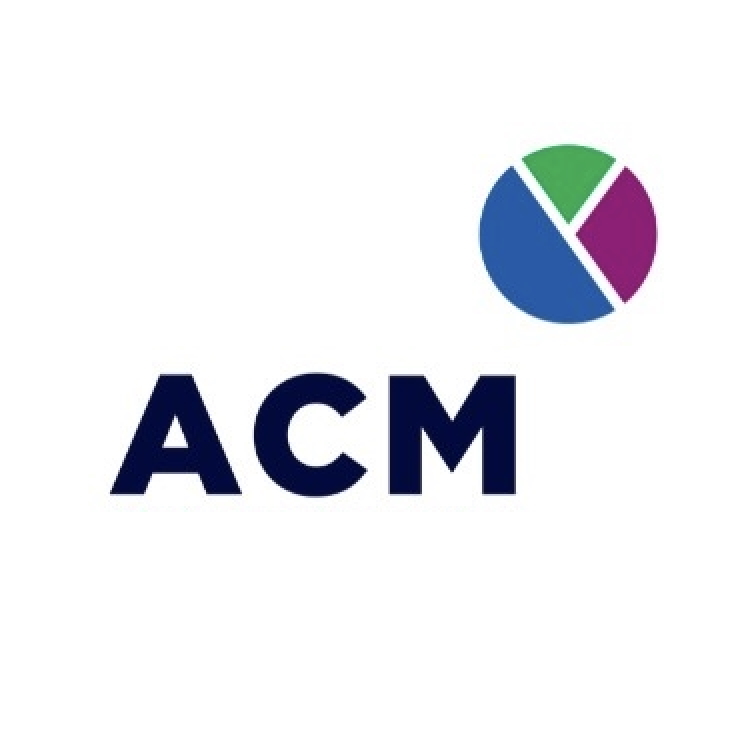
HR Marketing: Attracting & Retaining Talent in Canadian SMEs
HR marketing turns your company into a talent magnet by combining recruitment strategy with retention efforts. It relies on two pillars: attracting top profiles through a strong employer brand and retaining employees with an engaging work experience. By strengthening your employer brand, you can cut recruitment costs by up to 43% and boost productivity. Both external actions (such as social media and career sites) and internal initiatives (like transparent communication and training) enhance your attractiveness. Ready to transform your approach? Discover our HR consulting service to build a winning strategy.
Does recruiting and retaining top talent feel like an insurmountable challenge? HR marketing transforms this equation into an opportunity by aligning your employer brand with the expectations of candidates and employees. By combining an external strategy (social media, engaging career pages) with an internal approach (employee experience, retention programs), this method reduces recruitment costs by 43%, boosts productivity, and strengthens your reputation. Imagine attracting qualified applications through employee testimonials or retaining talent with a structured onboarding process. Ready to turn your human resources into a lever for growth and innovation?

HR Marketing: More Than Just a Job Posting
Looking to attract top talent without multiplying traditional job ads? HR marketing transforms your management practices into an attractiveness strategy. Discover how this approach revolutionizes HR management, particularly in a Canadian context where 80% of candidates research a company’s reputation before applying.
What Exactly Is HR Marketing?
Picture a revolution of traditional methods: instead of posting a standard job ad, you use marketing attraction techniques. In practice, you apply the same strategies that draw in your customers, but this time to capture the attention of talent. In Canada, where labor shortages affect sectors such as technology and healthcare, this is a significant advantage. A Montreal SME, for example, doubled its qualified applications by showcasing its teams through “day-in-the-life” videos on social media.
The Two Sides of HR Marketing: Attracting and Retaining
HR marketing can be divided into two key axes. External strategies capture talent through dynamic career pages, an active LinkedIn presence, and targeted campaigns. Initiatives like employee ambassador programs or partnerships with local schools generate, on average, 30% more applications. Internal strategies cultivate daily engagement through transparent communication and a stimulating environment. Retaining an employee costs 43% less than recruiting a new one, according to LinkedIn. Simple actions, such as regular stay interviews or structured referral programs, strengthen this bond.
The Central Role of the Employer Brand
Your employer brand is your HR showcase. It shapes how candidates and employees perceive your company. For an SME, a strong image reduces recruitment costs and attracts talent. Social media, employee testimonials, and CSR values become your strongest allies. A recent study reveals that 76% of Canadian workers value their employer’s reputation as much as their salary. Turn your employees into true ambassadors and watch your attractiveness transform.
Why Is HR Marketing a Growth Lever for Your SME?
Winning the War for Talent in the Canadian Market
Canada is facing a severe talent shortage. In 2023, employee turnover reached 15.5%, the highest rate since 2010. SMEs, which employ 63.7% of the private workforce, often lose out to large corporations and the public sector, where salaries can be up to 35.5% higher. How can you compete? By becoming your own employer brand.
HR marketing transforms your unique strengths into visible assets, such as a collaborative culture, flexibility, or proximity to management. L’Oréal saw a 30% increase in qualified applications by promoting its culture. Can a Quebec SME afford to do less?
Reducing Costs and Boosting Profitability
A poorly designed HR strategy is expensive. According to LinkedIn, a strong employer brand reduces recruitment costs by 43%. In 2023, turnover rose to 15.5% in Canada. Every departure triggers expenses related to hiring, training, and lost productivity. One analysis shows that a 20% turnover rate costs around $41,000 per year for a 120-employee SME.
Fortunately, solutions exist. Automating employee onboarding accelerates skills development. AI-powered platforms identify talent in just a few clicks—and internal ambassadors, like those at Starbucks, triple the number of applications.
Improving Engagement and Workplace Climate
A healthy work environment can reduce turnover by as much as 75%. Why? Because 70% of millennials would leave a company that doesn’t share their values. Internal HR marketing builds this synergy through recognition, regular feedback, and flexibility. The results?
- Higher quality of applications received.
- A 40% faster recruitment process.
- Turnover reduction of up to 28%.
- Increased productivity through stronger engagement.
- A stronger company reputation, both with clients and future talent.
Take Zappos, for example, which offers to pay new hires to quit. The result? Fewer than 3% accept the offer, while those who stay become loyal ambassadors. What if your SME built its own engagement strategy?

HR Marketing vs. Employer Brand: Unraveling the Distinction Between the Two
Employer Brand: Your Identity as an Employer
What’s your reputation on Glassdoor? The employer brand is the sum of employees’ and candidates’ perceptions of your culture, benefits, and work environment. It’s your DNA as an employer.
It goes beyond a simple slogan—it’s a promise reflected in your practices. According to LinkedIn, a strong brand reduces turnover by 25%. To make it real, align your actions with talent expectations, such as flexibility or a focus on social impact. In Canada, companies like Lightspeed show how work-life balance policies attract young graduates—an essential lever for SMEs struggling with talent shortages.
HR Marketing: Actions to Promote Your Identity
| Criteria | Employer Brand | HR Marketing |
|---|---|---|
| Nature | Identity, reputation, perception (the “What”) | Actions, strategy, communication (the “How”) |
| Main Objective | To be an employer of choice | To make it known that you are an employer of choice |
| Examples | Company culture, values, compensation policy, work environment | Career site, social media campaigns, referral programs, onboarding |
| Result | A positive and authentic image | Increased attraction and retention of talent |
HR marketing is a tool for building your employer brand. This includes optimized career pages, employee testimonials, and social campaigns. A targeted strategy cuts recruitment costs by 43%, according to LinkedIn. In Quebec, Hopper utilizes TikTok to showcase its agile environment, resulting in 60% more spontaneous applications.
How to Measure the Strength of Your Employer Brand
Track your eNPS (Employee Net Promoter Score) by asking: “Would you recommend your company?” Also, monitor Glassdoor: a negative review can harm your attractiveness, as Virgin Media experienced, resulting in $5 million in losses tied to poor candidate experience.
Offer acceptance rates (above 70%) and spontaneous applications reveal your appeal. Internally, a structured onboarding strengthens retention. An SME that ignores these indicators misses out on up to 30% of qualified talent. Finally, tools like Happier, used by Montreal-based companies, analyze employee experience in real-time across 12 key dimensions—allowing for quick adjustments.

How to Build Your HR Marketing Plan in 4 Key Steps
Step 1: Diagnose and Define Your Goals
Where to start? Assess your strengths and challenges as an employer. A strong employer brand reduces recruitment costs by 43%. Set SMART goals: for example, “Increase qualified applications by 25% within 6 months.”
A comprehensive HR audit includes analyzing reviews on Glassdoor, conducting interviews with your teams, and benchmarking against Quebec or Canadian competitors. A Montreal tech SME, for instance, identified a lack of visibility on LinkedIn, which then became its top priority.
An honest diagnosis turns your strengths into concrete, actionable steps. Where do you stand on retention, Glassdoor reputation, or job posting conversion rates? These insights guide your priorities.
Step 2: Identify Your Targets and Value Proposition
Who are you targeting? A junior developer passionate about green tech or a marketing director drawn to flexibility?
Create candidate personas based on your top-performing employees. For a Toronto start-up, this revealed a typical profile: 28 years old, hackathon enthusiasts, motivated by innovation, and active on GitHub. Your EVP (Employee Value Proposition) should highlight what makes you unique—your culture, mission, or CSR commitments.
Step 3: Roll Out Your Action Plan (External and Internal Tools)
To attract talent (external):
- Career site with testimonials and videos: 80% of candidates evaluate a company based on its website. An Ontario manufacturing SME doubled its applications after a revamp focused on its values.
- Active LinkedIn presence: Strategic companies see applications increase by 75%. A Montreal fintech gained 400 new monthly followers through employee live sessions.
- Job postings highlighting benefits: A tech company saw applications jump by 60% after showcasing its eco-driving program.
- Internal ambassadors: A Quebec hotel chain generated 30% more applications through an employee ambassador program.
To retain your teams (internal):
- Structured onboarding: 65% of integration success depends on this phase. A healthcare company successfully implemented a 30-60-90-day program.
- Transparent communication: Canadian companies with monthly general assemblies experience a 27% rise in engagement.
- Professional development: 94% of employees stay longer when offered training opportunities. A design firm launched a personalized “learning budget.”
- Well-being and work conditions (QVCT): Remote work and flexibility reduce turnover risk by 25%. A service SME introduced work-from-home Wednesdays and relaxation spaces.
Turn your HR strategy into a lever for business growth. Need inspiration? Check out our detailed guide.
Step 4: Measure, Analyze, and Adjust
Track your KPIs: career site traffic, average recruitment time, Glassdoor reviews. A/B testing job posting titles helped a Montreal software company improve application rates by 50%.
Monthly monitoring keeps you agile. High bounce rate or declining reviews? These indicators guide improvements. One tech SME revised its remote work policy after a 15% drop in employee ratings.
HR Marketing in Practice: 3 Inspiring Examples for Canadian SMEs
Example 1: The Tech SME That Attracts Developers
A Montreal startup struggles to attract developers in a competitive market. How can it stand out against major players?
It adopts targeted external HR marketing, including a technical blog that shares expertise, virtual meetups on artificial intelligence and blockchain, and a career page that highlights remote work and innovative challenges.
Result: Applications come from passionate candidates, not just job seekers—strengthening the employer brand and reducing recruitment costs by 20% in one year.
Example 2: The Manufacturing Company That Retains Employees
An Ontario SME faces a 25% turnover rate on its production lines. How can it stabilize its workforce?
It launches an “idea box” program rewarding suggestions for improvements, an internal newsletter showcasing employee contributions, and certified training in industrial maintenance.
One year later: Turnover drops by 15%. Employees feel engaged, which fosters a positive work environment and boosts productivity.
Example 3: The Services Firm That Bets on Culture
A Toronto consulting firm struggles to recruit young graduates against large corporations. How can it stand out by promoting a people-centered culture?
It communicates via Instagram and LinkedIn with open house videos, employee testimonials about work-life balance, and personalized mentoring from day one.
Result: The firm becomes a reference for graduates seeking a collaborative environment, cutting recruitment costs by 30% while generating 40% more qualified applications.
Ready to enhance your SME’s attractiveness? Discover our HR support, designed to meet strategies tailored to your Canadian reality.
HR marketing extends far beyond job postings: it’s a key strategy for attracting talent, retaining your teams, and enhancing your appeal. By aligning employer brand and concrete actions, you turn HR into a growth lever. Ready to take action? Discover our custom solutions for SMEs.




